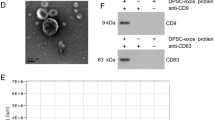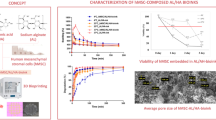Abstract
Effective cellular cryopreservation while maintaining high cell viability is achieved by preventing intracellular and extracellular ice crystal formation using the Cells Alive System (CAS), a programmed freezer that applies a magnetic field. Here, the optimal temperature settings of the CAS were determined using rat sciatic nerves as a model tissue. Firstly, it was found that Schwann cell survival was increased by pre-cooling the samples in the ice crystal formation zone, increasing the freeze–thaw speed, and freezing–thawing in a magnetic field. Secondly, the setting (intensity and frequency) of the magnetic field at freezing–thawing was changed, and the optimum magnetic field strength was determined by evaluating cell viability. At the set temperature excluding previous studies, the minimum temperature was set to − 50 °C and kept frozen for 15 min, and then thawed immediately. The highest cell viability (27%) was achieved at 0.67 mT (intensity 3 [29.6 V] and frequency setting 10 [60 Hz]). The effects of the freeze–thaw program were assessed using transplanted sciatic nerve tissues removed after 2, 4, and 8 weeks. Anterior tibial muscle wet weight increased at 8 weeks in the control (without freezing) and after freezing–thawing in a magnetic field, compared to that without a magnetic field. Fluorescence staining of the sciatic nerve with anti-S100 antibodies revealed that Schwann cell counts increased at the transplanted site (at 8 weeks) of nerves that were freeze–thawed in a magnetic field. Overall, the CAS prevented ice crystal formation in rat sciatic nerves and could be used to maintain cell viability during cryopreservation.









Similar content being viewed by others
References
Bank H, Mazur P (1972) Relation between ultrastructure and viability of frozen-thawed Chinese hamster tissue culture cells. Exp Cell Res 71:441–454. https://doi.org/10.1016/0014-4827(72)90314-x
Evans PJ, Mackinnon SE, Levi AD, Wade JA, Hunter DA, Nakao Y, Midha R (1998) Cold preserved nerve allografts: changes in basement membrane, viability, immunogenicity, and regeneration. Muscle Nerve 21:1507–1522. https://doi.org/10.1002/(sici)1097-4598(199811)21:11%3c1507:aid-mus21%3e3.0.co;2-w
Fansa H, Lassner F, Kook P, Keilhoff G, Schneider W (2000) Cryopreservation of peripheral nerve grafts. Muscle Nerve 23:1227–1233. https://doi.org/10.1002/1097-4598(200008)23:8%3c1227:aid-mus11%3e3.0.co;2-6
Hibino H, Hatake K, Sugimura Y (1995) Experimental study on cryopreservation methods of cultured mucosal epithelium. Jpn J Oral Maxillofac Surg 41:32–38. https://doi.org/10.5794/jjoms.41.616[Article in Japanese]
Kaku M, Kamada H, Kawata T et al (2010) Cryopreservation of periodontal ligament cells with magnetic field for tooth banking. Cryobiology 61:73–78. https://doi.org/10.1016/j.cryobiol.2010.05.003
Kawata T (2016) Freezing of premolar and wisdom teeth extracted for orthodontic treatment. Kanagawa Shigaku 51:9–19 [Article in Japanese]
Kojima SH, Kaku M, Kawata T et al (2015) Cranial suture-like gap and bone regeneration after transplantation of cryopreserved MSCs by use of a programmed freezer with magnetic field in rats. Cryobiology 70:262–268. https://doi.org/10.1016/j.cryobiol.2015.04.001
Kornfeld T, Vogt PM, Radtke C (2019) Nerve grafting for peripheral nerve injuries with extended defect sizes. Wien Med Wochenschr 169:240–251. https://doi.org/10.1007/s10354-018-0675-6
Koseki H, Kaku M, Kawata T (2013) Cryopreservation of osteoblasts by use of a programmed freezer with a magnetic field. Cryo Lett 31:10–19
Mazur P (1977) The role of intracellular freezing in the death of cells cooled at super optimal rates. Cryobiology 14:251–272. https://doi.org/10.1016/0011-2240(77)90175-4
Nishiyama Y, Iwanami A, Kohyama J (2016) Safe and efficient method for cryopreservation of human induced pluripotent stem cell-derived neural stem and progenitor cells by a programmed freezer with a magnetic field. Neurosci Res 107:20–29. https://doi.org/10.1016/j.neures.2015.11.011
Sano K, Hashimoto T, Ozeki S et al (2015) Histological alteration of amputated tail of a rat after CAS freezing and its possibility of replantation. J Jpn Soc Surg Hand 32:95–97 [Article in Japanese]
Shikata H, Kaku M, Kojima S (2016) The effect of magnetic field during freezing and thawing of rat bone marrow-derived mesenchymal stem cells. Cryobiology 73:15–19. https://doi.org/10.1016/j.cryobiol.2016.06.006
Acknowledgements
We thank Prof. Satoru Oseki (Dokkyo Medical University Saitama Medical Center Orthopedic), Nakadate Kazuhiko (Meiji Pharmaceutical University School of Pharmacy), and Dr. Sano Kazufumi (Dokkyo Medical University Saitama Medical Center Orthopedic) for their research advice and guidance. We would like to express our gratitude to the researchers at the Animal Experiment Center of Saitama Medical Center, Dokkyo Medical University, for their help.
Funding
None.
Author information
Authors and Affiliations
Contributions
Prof. Satoru Oseki (Dokkyo Medical University Saitama Medical Center Orthopedic), Dr. Sano Kazufumi (Dokkyo Medical University Saitama Medical Center Orthopedic) participated in the conception, writing, correction, Prof. Nakadate Kazuhiko (Meiji Pharmaceutical University School of Pharmacy) participated in the conception, writing, correction. The researchers at the Animal Experiment Center of Saitama Medical Center, Dokkyo Medical University participated in the study, the correction and the supervision.
Corresponding author
Ethics declarations
Conflict of interest
The authors declare that they have no conflict of interest.
Human and animal rights
Experimental protocols were approved by the Institutional Animal Care and Use Committee of Dokkyo Medical University (Permit Number: 1015), which operates in accordance with the Japanese Government for the care and use of laboratory animals.
Additional information
Publisher's Note
Springer Nature remains neutral with regard to jurisdictional claims in published maps and institutional affiliations.
Rights and permissions
About this article
Cite this article
Hashimoto, T., Kazufumi, S., Satoru, O. et al. Effect of the Cell Alive System on nerve tissue cryopreservation. Cell Tissue Bank 21, 139–149 (2020). https://doi.org/10.1007/s10561-019-09807-1
Received:
Accepted:
Published:
Issue Date:
DOI: https://doi.org/10.1007/s10561-019-09807-1




